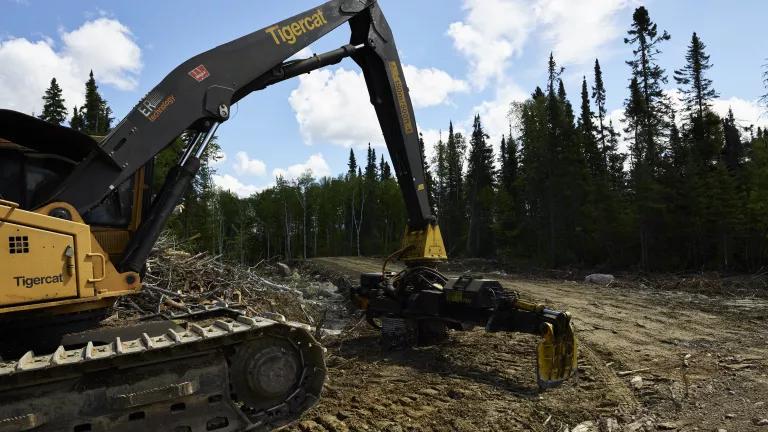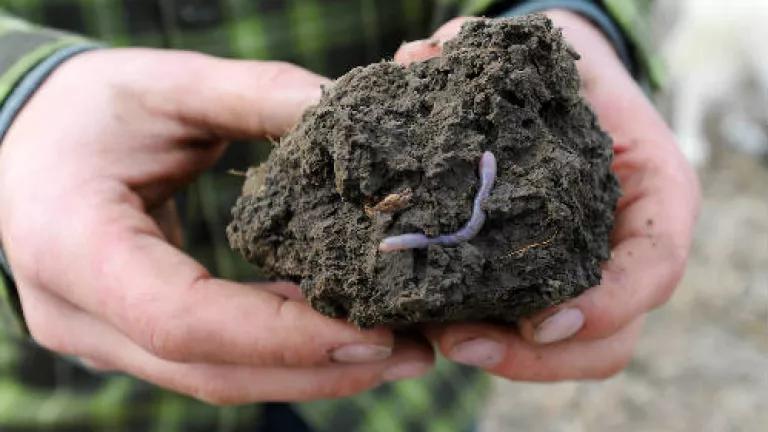On Forests, Home Depot Fails to Meet the Moment
How the DIY retailer giant's latest forest sourcing policy misses the mark

River Jordan for NRDC
At a time when governments, scientists, and civil society groups are all elevating the urgent need to halt deforestation and forest degradation, DIY retailer giant The Home Depot has pushed in the opposite direction with the publication of its new forestry policy and “Sustainable Forestry Report.”
These new publications were a response to a clear and overwhelming signal from Home Depot’s shareholders in 2022. That May, two-thirds of Home Depot’s shareholders called on the company to “issue a report assessing if and how it could increase the scale, pace, and rigor of its efforts to eliminate deforestation and the degradation of primary forests in its supply chains” by voting for a shareholder proposal filed by Green Century Capital Management.
That directive, along with the proposal’s supporting statement, painted a clear picture of what information investors wanted to see and what risks the company should disclose about its sourcing impacts on deforestation and forest degradation. But in the company’s just-released publications, Home Depot opted instead for greenwashing and inaction.
Home Depot’s new sourcing policy is a fixer-upper
The most glaring omission in Home Depot’s response is one of the two main pillars of the shareholders’ demand: forest degradation. Forest degradation is the loss or reduction of a forest’s ecosystem integrity. This can include species declines, fragmentation of forest, loss of carbon storage, and other critical ecological indicators, which are caused by clearcutting primary, mature, and old growth forests. Home Depot sources nearly 80% of its wood from North America, where forest degradation is a major threat. In fact, a recent study led by Dr. Brendan Mackey of Griffith University found that industrial logging in the boreal forest of Ontario and Quebec had caused significant, cumulative degradation, clearcutting over 35 million acres and leading to the fragmentation of older stands and the loss of critical species habitat.
Investors clearly articulated that they wanted to understand how Home Depot is addressing risks from forest degradation in its supply chain. Home Depot ignored that request, and that supply chain controversy, entirely.
Even more problematically, Home Depot’s Sustainable Forestry Report doesn’t just omit degradation, it denies it entirely, offering an unquestioning embrace of Canada’s “sustainable forest management” regime. While avoiding discussing the real and severe impacts of ongoing industrial logging in the forests of Canada, the report trumpets Home Depot’s “confidence in the sustainability and management of Canadian forests.”
In the forestry report, Home Depot also failed to disclose, respond to, and take steps to mitigate the risk implications from recent evidence of illegally-sourced wood from Equatorial Guinea being sold in U.S. stores. The watchdog organization Environmental Investigation Agency (EIA) released a report in November documenting an alarming connection between millions of doors sold in more than 750 Home Depot stores and illegal harvesting in Equatorial Guinea. EIA recommended that Home Depot adopt a requirement of full traceability to the point of harvest for suppliers in its new wood sourcing policy. Instead, Home Depot’s new policy says they require suppliers to “maintain detailed information regarding their wood sourcing,” a policy that’s neither clear nor comprehensive.
The final problem in Home Depot’s new sourcing policy and forestry report is their doubling down on a geographic risk approach. By designating certain areas as higher-risk and requiring additional (albeit meager) requirements for products only from those geographies, Home Depot deflects scrutiny from other regions, giving a free pass to its sourcing operations in other parts of the world, and in particular the Global North.
The truth is, deforestation and forest degradation are global problems, and companies that source globally must apply equal scrutiny to all the places from which they source. Home Depot is creating a North America-sized hole in its sourcing policy by avoiding a comprehensive approach to risk management. More than that, it’s reinforcing denialist narratives that perpetuate unsustainable logging practices and stymie urgently needed progress.
Taking the DIY approach to responsible sourcing
Ironically, if Home Depot were to demonstrate true leadership, the “do-it-yourself” mentality would not be a bad approach to take when it comes to responsible supply chain management. Home Depot should do its own due diligence (as policymakers increasingly expect of suppliers), set its own clear expectations of suppliers, and create its own time-bound consequences for non-compliance.
Home Depot’s shareholders should see through the veneer of sustainability claims in the company’s latest publications and the major gap between what the company delivered and what they asked it to do. The DIY chain still has a lot of work to do on itself to become a responsible actor.




